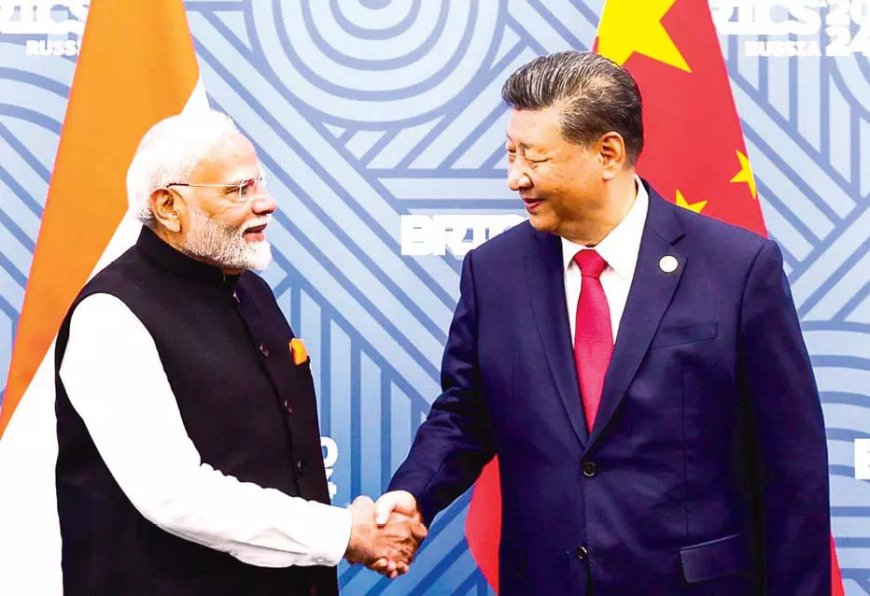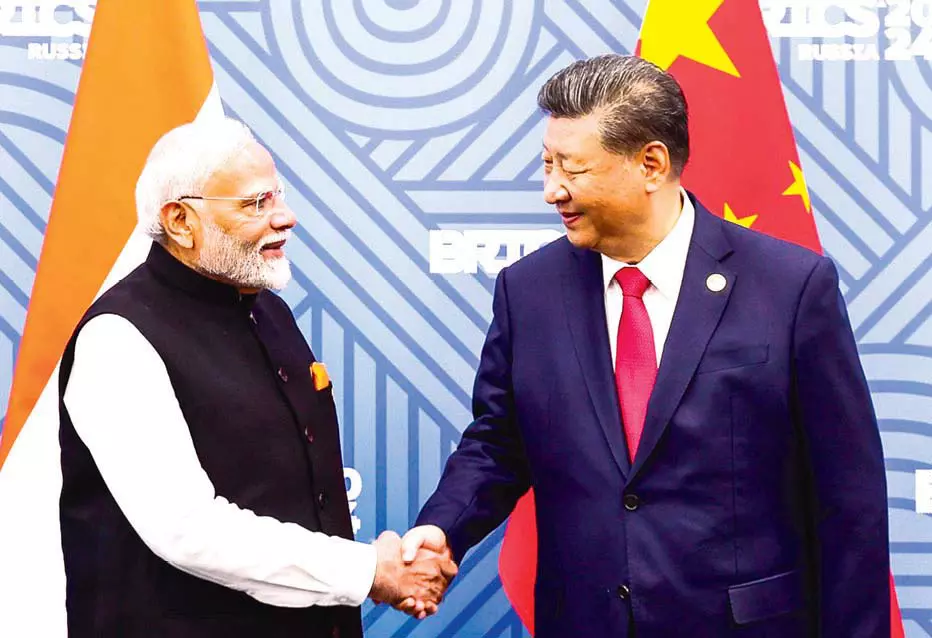DC Edit | 2024: Watershed year for Indian diplomacy
The mandarins of the external affairs ministry can pat themselves on the back for a successful year of dialogue and diplomacy with various countries and at international forums. If India is in a better space towards the end of 2024 than it was at the beginning of the year, much of it is owed to the sustained work done in continuous engagements. The crowning achievement of direct diplomacy through bilateral meetings at different levels in the year was with China. The recommencement of the meeting of special representatives after five years saw both countries positively affirming the outcome of the disengagement process on the LAC while agreeing to move the relationship forward in many more areas. A Himalayan thaw would not have come about without China, easily the most dominant player in regional forums at which India is also featured prominently, sowing the initiative to resolve the border standoff. As if to indicate where the diplomatic push came from, President Xi Jinping had shepherded Prime Minister Narendra Modi to a photo opportunity after their meeting in Kazan, Russia on October 23 at which they had agreed to revive mechanisms to address the border issue as a first step towards normalising bilateral ties. A meeting between the foreign ministers at the G-20 in Rio de Janeiro was followed by the SRs meet led by NSA Ajit Doval and China’s Wang Yi in Beijing this week. Together, they gave the peace initiatives a positive momentum with there being talk of convergence over six points for taking forward cross-border cooperation, including revival of the Manasarovar yatra for Indians and data sharing on trans-border rivers and border trade. This is a total turnaround from the Galwan clashes of the summer of 2020 that had revived the worst of old suspicions and widened a trust deficit. The Chinese troop buildup on the LAC may not have lessened much, but the phased disengagement and resumption of patrolling can be taken as proof of how India had stood up to China on the border, not cowing down to the Chinese strategy of “salami-slicing” that it may be following in its border disputes with at least five other countries. Standing as we do at a promising moment resembling the start of a new era in China ties, India can take heart from the fact that the year saw it solidify its relationship with Sri Lanka, which pivoted off a distinct Chinese orbit and sought a change that might even see it tilt a bit towards India. Having been a friend in need at the time of the financial meltdown, India is in a far better place vis a vis Sri Lanka too than at the start of the year. With solid, even stolid diplomacy, India was able to get through to an aggressively pro-China Maldives and bring it around to see the benefit of balanced ties. India has opened its purse strings to be more helpful to neighbours and done so with good intentions and that made a difference in Sri Lanka and Maldives. A change in regime in Bangladesh might test India’s patience at diplomacy, but there, too, India made its point in the foreign secretary’s visit for Dhaka to convince it of how beneficial connectivity in energy, digital avenues and trade could be for a developing nation. Pakistan will be Pakistan, and it continues to swear by cross-border terror. It will be a thorn until some day that China convinces it of the attractions of regional peace initiatives. Even so, India can look back at 2024 and call it a diplomatic watershed year that may help usher in prosperity along with peace.


The mandarins of the external affairs ministry can pat themselves on the back for a successful year of dialogue and diplomacy with various countries and at international forums. If India is in a better space towards the end of 2024 than it was at the beginning of the year, much of it is owed to the sustained work done in continuous engagements.
The crowning achievement of direct diplomacy through bilateral meetings at different levels in the year was with China. The recommencement of the meeting of special representatives after five years saw both countries positively affirming the outcome of the disengagement process on the LAC while agreeing to move the relationship forward in many more areas.
A Himalayan thaw would not have come about without China, easily the most dominant player in regional forums at which India is also featured prominently, sowing the initiative to resolve the border standoff. As if to indicate where the diplomatic push came from, President Xi Jinping had shepherded Prime Minister Narendra Modi to a photo opportunity after their meeting in Kazan, Russia on October 23 at which they had agreed to revive mechanisms to address the border issue as a first step towards normalising bilateral ties.
A meeting between the foreign ministers at the G-20 in Rio de Janeiro was followed by the SRs meet led by NSA Ajit Doval and China’s Wang Yi in Beijing this week. Together, they gave the peace initiatives a positive momentum with there being talk of convergence over six points for taking forward cross-border cooperation, including revival of the Manasarovar yatra for Indians and data sharing on trans-border rivers and border trade.
This is a total turnaround from the Galwan clashes of the summer of 2020 that had revived the worst of old suspicions and widened a trust deficit. The Chinese troop buildup on the LAC may not have lessened much, but the phased disengagement and resumption of patrolling can be taken as proof of how India had stood up to China on the border, not cowing down to the Chinese strategy of “salami-slicing” that it may be following in its border disputes with at least five other countries.
Standing as we do at a promising moment resembling the start of a new era in China ties, India can take heart from the fact that the year saw it solidify its relationship with Sri Lanka, which pivoted off a distinct Chinese orbit and sought a change that might even see it tilt a bit towards India. Having been a friend in need at the time of the financial meltdown, India is in a far better place vis a vis Sri Lanka too than at the start of the year.
With solid, even stolid diplomacy, India was able to get through to an aggressively pro-China Maldives and bring it around to see the benefit of balanced ties. India has opened its purse strings to be more helpful to neighbours and done so with good intentions and that made a difference in Sri Lanka and Maldives.
A change in regime in Bangladesh might test India’s patience at diplomacy, but there, too, India made its point in the foreign secretary’s visit for Dhaka to convince it of how beneficial connectivity in energy, digital avenues and trade could be for a developing nation.
Pakistan will be Pakistan, and it continues to swear by cross-border terror. It will be a thorn until some day that China convinces it of the attractions of regional peace initiatives. Even so, India can look back at 2024 and call it a diplomatic watershed year that may help usher in prosperity along with peace.






































